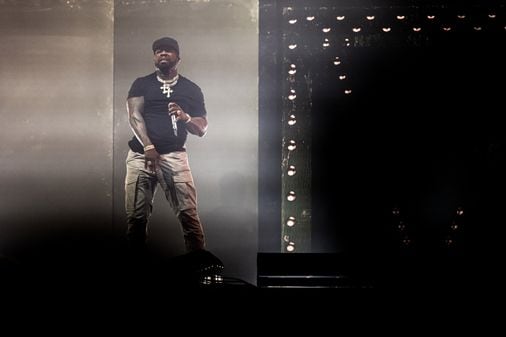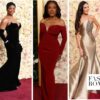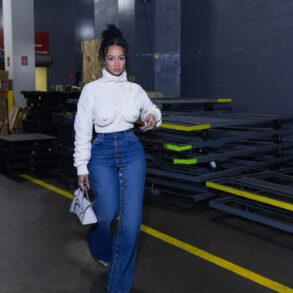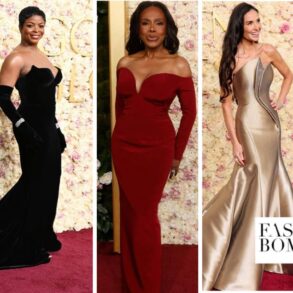
With all that in mind, the Globe reached out to Bostonians across the hip-hop community to ask about their inspirations. Which artist, scene, or album made them want to create hip-hop art? Here’s what they told us (some answers have been edited for length and clarity).
“The album and artist that changed everything for me was ‘Lupe Fiasco’s Food & Liquor.’ When I heard ‘Kick, Push,’ and understood the double meaning of it, I felt like there was a space for me in hip-hop. During that time, gangsta rap was prominent, and Lupe was the one that really showed that somebody that thinks the way that I do could actually fit into hip-hop.” — Latrell James, artist/producer
“50 Cent’s mixtapes growing up really inspired me, but when he finally released “Get Rich or Die Tryin’,” the way he rapped, the way he carried his group G-Unit, and then the way he became a businessman, made me realize you have to speak whatever you want into existence. I spoke longevity, and I feel that it is happening for me.” — DJ Whysham, DJ/producer/songwriter
“Although I started writing rhymes from as early as 8 or 9 years old, it had to be when LL Cool J dropped ‘I’m Bad’ in ‘86 that really made me want to be a professional rapper someday. LL was still just a kid then, just a few years older than me, and he was able to use his music to make himself seem like a larger-than-life superhero from around the way. My inspirations would later diversify, but it definitely started with LL Cool J.” — Akrobatik, MC and American studies lecturer at UMass Boston
“The moment I seen Grandmaster Flash in the kitchen on the wheels of steel in the movie ‘Wild Style’ I became one with hip-hop. That whole scene painted a picture of the culture without words. Then came hearing KRS-One’s ‘Criminal Minded’ for the first time. It was a rap after that.” — Fabian Murray, freehand visual/graphic artist, @fmd_art
“I’m an immigrant, so hip-hop wasn’t a culture I understood or gravitated towards until I was in my late teens. I remember listening to a breaks mix on an b-boy forum [online] in the early 2000s. It exposed me to music from the ‘60s, ‘70s, and ‘80s that I had never heard before. When I realized that this music was the foundation of hip-hop, I became a lot more interested in understanding the history, the context. and the through lines connecting it all.” — Ed Word Galan, DJ/cofounder A Trike Called Funk mobile pop-up party
“The moment that I fell in love with hip-hop was hearing Biggie Smalls’s ‘Warning.’ I was 10 years old in the car with my mom’s boyfriend after a cookout. I had never heard anything like it in my life. The way Biggie enunciated his words, the simplicity but potency of the bassline and the drums together made me instantly hooked. It definitely sparked my interest and understanding of what flow means, and from that point on I became a Biggie student. I learned world history, street code, and samples from the ‘70s without being aware of it.” — Billy Dean Thomas, artist/producer
“My first inspiration is my dad. He’s been producing music under the name Kelokeyzz since before I was born, so he was my first introduction to music, period. Since I’ve taken my art more seriously these past few years, it’s so incredible to see how excited he gets about my music career. After that, some of my OG inspirations are legends like Michael Jackson, Left Eye, Chris Brown, Beyoncé, and of course Missy Elliott. The way her genius and influence has reverberated through the years, I feel like she really set the tone for me in terms of performing, wordplay, and just having fun. I hope I get to work alongside her someday!” — kei, artist
“Mixtapes themselves made me want to create hip-hop. The DJ had 90 minutes to fill with music in a creative fashion to showcase his talent. DJ Clue, Goldfinger, and Ron G were the first mixtapes that I owned. I personally favored the ‘blend’ mixtapes over the ‘exclusive’ ones because of the versatility.” — DJ E Dubble, DJ/radio personality at JAMN 94.5
“The period of 1984-85 was massive for hip-hop becoming what it is. Before that, you had Sugar Hill and electronic stuff like Bambaataa, Kraftwerk, Newcleus. Then suddenly all these record labels emerged: Def Jam, Pop Art, Select, Profile, Vintertainment, Sutra, Tommy Boy, and they all had innovative and pioneering artists. It was all of that for me.” — Kaz Supernova, artist/producer/filmmaker (“Wortown Rising — The Untold Story of the First Hip-Hop Music Scene in Worcester MA”)
“I have two moments. The first is listening to tracks from 50 Cent’s ‘Get Rich or Die Tryin’ ’ album every day with my mom when she would drive me and my siblings around the city. 50 Cent’s story was super-inspirational for us, and he was like a superhero to me. Hearing his music is what got me and my siblings to start freestyling. My second moment was listening to ‘Illadelph Halflife’ by the Roots during my senior year of high school. Hearing the hook for ‘Respond/React’ and then the first verse from Black Thought was the very moment I knew that I wanted to contribute to this culture and tell my story through rap.” — Nate Nics, rapper/producer/songwriter/community organizer
“My uncles were my introduction to hip-hop. One of them had a dual cassette player, and he would give us cassettes. I first lived in Roxbury and then moved to Quincy, which was a complete culture shock, but my uncle would make these cassettes of EPMD and Run-D.M.C. I breakdanced, had turntables, and freestyle, so I covered every element, but graffiti was my first time making something that was part of hip-hop. Graffiti was finding your visual voice. Part of being human is putting something up and showing that you exist in the world, so graffiti became my identity, and the visual representation of who I am. And I also try to make it the visual representation of the music.” — Cedric “Vise1″ Douglas, graffiti artist
“For the moment or song that inspired me to want to make hip-hop my life, I think it’s a tie between ‘Grandmaster Flash on the Wheels of Steel’ and Doug E. Fresh and Slick Rick’s ‘The Show’ 12-inch. I heard them both around the same time, and I bought them at the same time at Ann & Hope. The way both songs had all these familiar elements but recontextualized them in this new way was just mind-blowing to me. I was already a huge Run-D.M.C. and Whodini fan, but the moment of really digesting those two songs really did it for me.” — 7L, DJ (Czarface, 7L & Esoteric), owner of Soundtracks record store in Beverly
This post was originally published on this site be sure to check out more of their content.






